Discover the vibrant flavors of Nepal with a culinary journey that begins at sunrise. The country’s traditional breakfast dishes offer a feast not only for the taste buds but also a delightful peek into its rich cultural tapestry. From the sweet, crisp textures of Sel Roti to the savory depths of Puri Tarkari, each dish provides a unique start to the day. These morning delights are an essential part of Nepali heritage, combining flavors that range from earthy and spicy to sweet and tangy.
Whether you are planning a trek through the stunning landscapes of the Himalayas or exploring the bustling streets of Kathmandu, starting your day with a typical Nepali breakfast is the perfect way to fuel your adventures. These breakfasts are not just meals but a celebration of local ingredients and traditional cooking techniques. Dive into our guide on Morning Delights: The Best Nepali Breakfasts to Try and prepare to be enchanted by the diverse and hearty flavors that define morning meals in Nepal.
At Kathmandu Cooking Academy, we offer an unmatched experience for those eager to learn about and enjoy Nepali breakfasts. Our cooking classes provide a hands-on approach to preparing traditional morning dishes like Sel Roti, Puri Tarkari, and Masala Tea. Located in the heart of Nepal, our academy is the perfect place for both locals and tourists to discover the rich flavors of Nepali cuisine right from its source. Join us to explore the delicious and diverse breakfast options that Nepal has to offer.
Sel Roti
Sel Roti is a traditional Nepali dish that is as much a part of Nepal's cultural identity as it is a beloved breakfast item. Here are the key points that explain what Sel Roti is all about:
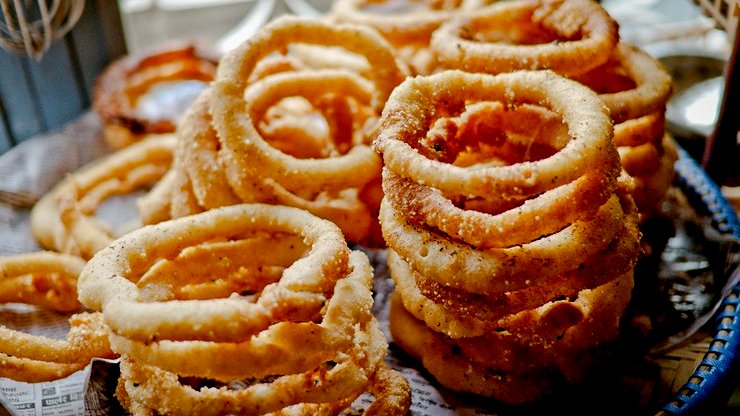
- Origins and Cultural Significance: Sel Roti is deeply rooted in Nepali traditions and is particularly prominent during festivals like Dashain and Tihar. It's often made in Nepali households as a celebratory food but is also popular as an everyday breakfast item.
- Ingredients: The primary ingredient in Sel Roti is rice flour, which is mixed with water to create a batter. To this, sugar, cooking oil, and various spices such as cardamom and sometimes cloves or cinnamon are added for flavor.
- Preparation: The batter is carefully prepared to have a slightly thick but pourable consistency. It’s then deep-fried in a ring shape, which requires a skilled hand. The cook pours and shapes the batter into hot oil, forming a large, thin ring that fries until it turns a golden brown.
- Texture and Taste: Sel Roti is unique for its crispy exterior and soft, tender interior. The use of sugar and spices gives it a mildly sweet flavor with aromatic undertones, making it quite distinct from other types of bread or doughnuts.
- Serving: It can be eaten on its own, enjoyed with a cup of tea, or served alongside savory items such as curry or chutney. During breakfast, it’s commonly paired with aloo ko achar (potato pickle) or yogurt.
- Versatility: While it is a staple during Nepali festivals, its popularity as a breakfast item means that it can be found in local markets and street food stalls throughout the year.
- Symbolic Value: For many Nepalis, making and sharing Sel Roti is a way to celebrate community and family ties, particularly during festive occasions when people gather and cook together.
This delightful dish is not just food; it's a symbol of Nepali hospitality and tradition, enjoyed by both locals and visitors who wish to immerse themselves in Nepal's rich culinary heritage.
Puri Tarkari
Puri Tarkari is a popular Nepali breakfast dish that is loved for its simplicity and flavor. Here are the key points that explain what Puri Tarkari is all about:
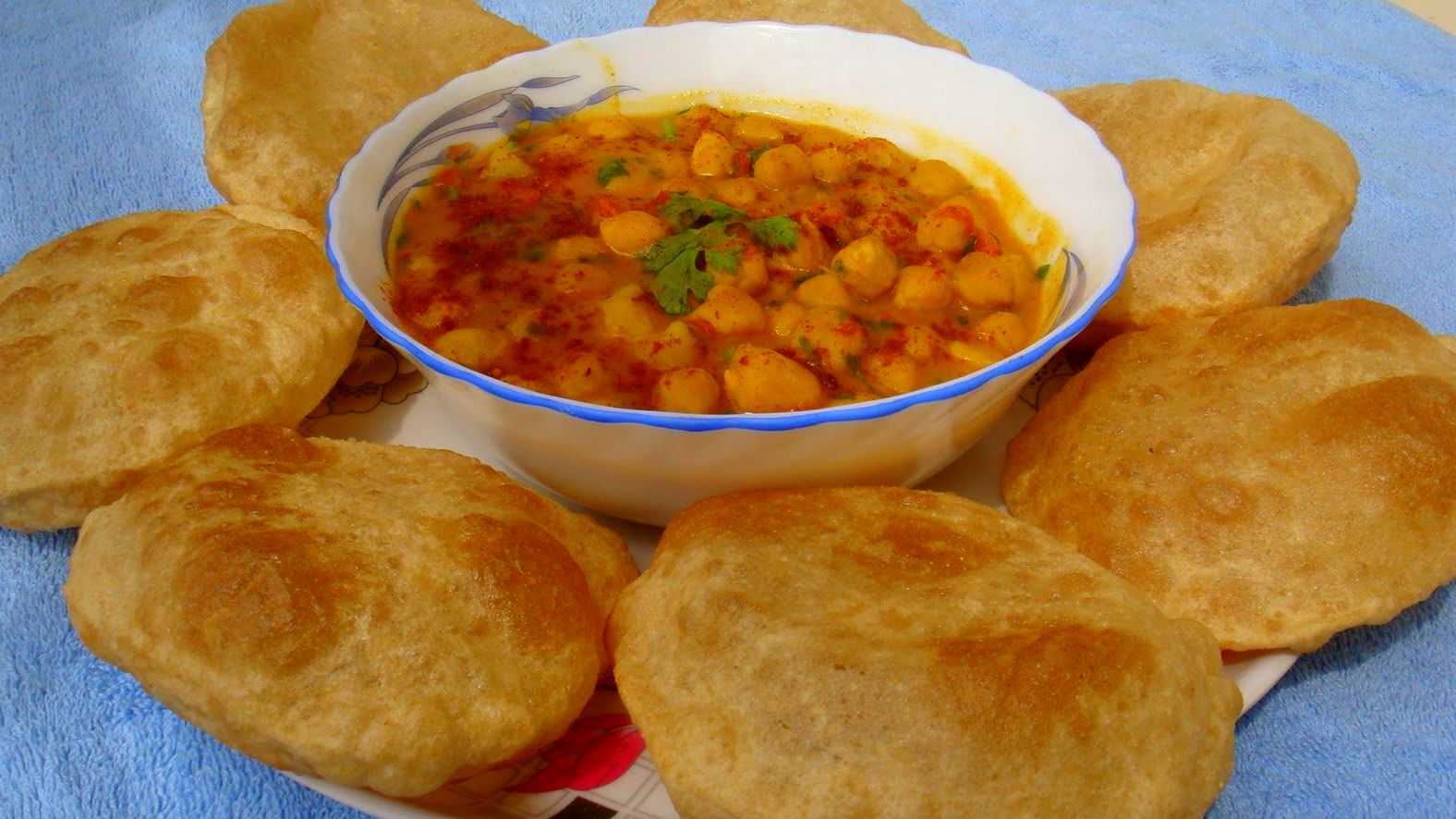
- Description: Puri Tarkari consists of two main components: Puri (a deep-fried bread) and Tarkari (a spicy vegetable curry). The combination offers a satisfying mix of textures and flavors, making it a favorite breakfast choice among Nepalis.
- Ingredients: Puris are made from a simple dough of wheat flour, water, and a pinch of salt, sometimes with a little ghee (clarified butter) added for richness. The Tarkari can vary based on regional preferences and available vegetables but typically includes potatoes, onions, green peas, and various spices such as turmeric, cumin, coriander, and red chili powder.
- Preparation: The dough for the puris is kneaded until smooth and then divided into small balls, which are rolled out into thin circles before being deep-fried in oil until they puff up and turn golden brown. The tarkari is prepared by sautéing onions and spices, adding vegetables, and cooking them until tender. Water or vegetable stock is often added to create a flavorful sauce.
- Texture and Taste: Puris are light and fluffy on the inside with a crispy exterior, providing a pleasing crunch with each bite. The Tarkari is hearty and spicy, with a rich amalgamation of flavors from the various spices and vegetables, creating a perfect counterbalance to the neutral taste of the puris.
- Serving: This dish is typically served hot, with the freshly fried puris paired with the warm, spicy tarkari. It’s often accompanied by a side of pickles or a fresh salad to add acidity and freshness to the meal.
- Occasions: While Puri Tarkari is a common breakfast item, it’s also served during various festivals and special occasions, making it a versatile dish for any time of day.
- Popularity: Due to its delicious taste and fulfilling nature, Puri Tarkari is popular not only in Nepal but also in various other regions where Nepali communities reside, including parts of India and Bhutan.
Puri Tarkari represents a perfect blend of nutrition and taste, embodying the warmth and richness of Nepali cuisine. It's a delightful way to start the day, providing energy and comfort in every bite.
Kodo Ko Roti
Kodo Ko Roti is a traditional Nepali flatbread that plays a significant role in the culinary culture of Nepal, particularly in the rural areas. Here's a detailed look at what makes Kodo Ko Roti a unique and nutritious choice for breakfast or any meal:
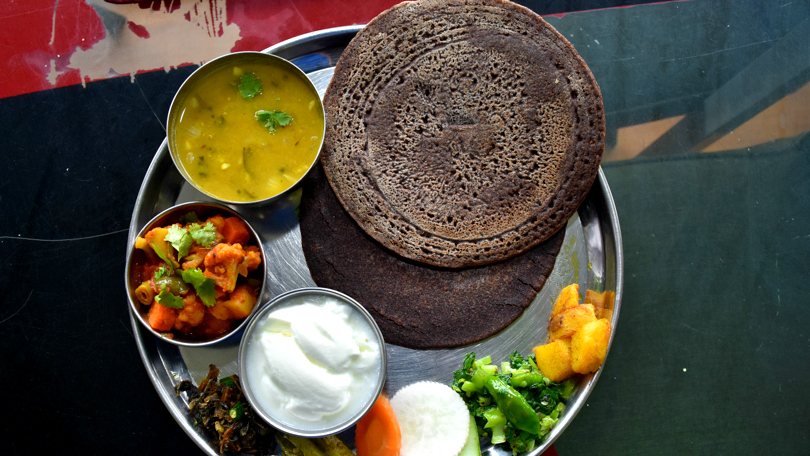
- Description: Kodo Ko Roti is made from millet flour, which is known for its high nutritional value and gluten-free properties. This flatbread is a staple in many parts of Nepal, especially in regions where millet is a common crop.
- Ingredients: The primary ingredient is millet flour. Water and a little salt are added to form a dough. Sometimes, a bit of oil or ghee is mixed into the dough to enrich the flavor and improve the texture of the roti.
- Preparation: The dough is typically kneaded until smooth and then divided into small portions. Each portion is flattened and shaped into a round disc by hand or using a rolling pin. The roti is then cooked on a hot griddle or tawa until it is golden brown and cooked through, often flipped to ensure even cooking on both sides.
- Texture and Taste: Kodo Ko Roti has a soft texture with a slightly nutty flavor, characteristic of millet. It’s less chewy than wheat flatbreads and has a mild, pleasant taste that pairs well with both savory and sweet accompaniments.
- Serving: It is commonly served with a variety of side dishes such as homemade pickles, yogurt, or vegetable curries. In some regions, it is also enjoyed with a dollop of ghee or butter on top, which melts into the warm roti, adding an extra layer of flavor.
- Health Benefits: Millet is rich in fiber, protein, and essential minerals such as magnesium, phosphorus, and iron. Kodo Ko Roti is not only a gluten-free option but also beneficial for those looking to incorporate whole grains into their diet.
- Cultural Significance: In many Nepali communities, especially in hilly and mountainous regions, millet is a more commonly cultivated grain due to its adaptability to less fertile soil and its resilience to harsh weather conditions. Kodo Ko Roti is thus a reflection of the agricultural practices and dietary preferences of these communities.
- Popularity: While popular throughout Nepal, Kodo Ko Roti holds particular significance in rural areas where traditional cooking methods and ingredients are preserved and celebrated.
Kodo Ko Roti is a testament to the simplicity and healthfulness of Nepali cuisine, offering a delicious and wholesome option that highlights the importance of local grains in the diet.
Chiura with Yogurt and Honey
Chiura with Yogurt and Honey is a beloved breakfast combination in Nepal, known for its simplicity, health benefits, and delicious taste. Here’s an in-depth look at this light and energizing meal:
- Description: Chiura, also known as beaten rice or flattened rice, is a dehydrated form of rice that is flattened into flat, dry flakes. These flakes absorb liquids and swell when added to either hot or cold, making them soft and edible without the need for cooking. This dish is paired with yogurt and drizzled with honey, creating a wholesome and satisfying meal.
- Ingredients: The main components are chiura (beaten rice), fresh yogurt, and natural honey. The combination balances the textures and flavors—crunchy chiura, creamy yogurt, and sweet, aromatic honey.
- Preparation: Preparation is straightforward and quick, involving no actual cooking. Chiura is simply taken as is, and fresh yogurt is spooned over it. A generous drizzle of honey is added for sweetness and extra flavor.
- Texture and Taste: The texture of Chiura with Yogurt and Honey varies from slightly crunchy to soft, depending on the freshness of the chiura and the amount of yogurt used. The natural sweetness and floral notes of honey complement the tanginess of the yogurt, while chiura adds a pleasant crunch.
- Serving: This dish is typically served as a breakfast but can also be enjoyed as a light snack or dessert. It is especially popular in the summer months because of its refreshing qualities but is enjoyed year-round for its health benefits and ease of preparation.
- Health Benefits: Chiura is a good source of carbohydrates and energy, while yogurt provides calcium, protein, and probiotics beneficial for digestive health. Honey offers natural sweetness and energy without the use of refined sugars, along with antioxidants.
- Cultural Significance: Chiura is a staple in many Nepali homes and is often used in various traditional meals and rituals. This breakfast is favored for its ease of preparation and nutritional value, making it a common choice for busy mornings and festive occasions alike.
- Popularity: This meal is popular across Nepal, especially in urban areas where fast, easy-to-prepare meals are appreciated. It’s also a hit among trekkers and travelers looking for a quick, energizing start to their day.
Chiura with Yogurt and Honey embodies the essence of Nepali cuisine, where simplicity meets flavor and nutrition. It’s a testament to the ingenuity of using local ingredients to create meals that are both satisfying and healthful.
Bara
Bara is a traditional Nepali dish from the Newari culture of the Kathmandu Valley, celebrated for its unique texture and flavor. Here’s an in-depth exploration of this savory lentil pancake:
- Description: Bara is a savory, thick pancake made from a batter of ground black lentils (urad dal). This versatile dish can be enjoyed in various forms, either plain or with additions such as minced meat or an egg, which are mixed into the batter before cooking.
- Ingredients: The primary ingredient in Bara is black lentils (urad dal), which are soaked, husked, and then ground into a fine paste. Common seasonings include salt, cumin, and sometimes ginger or garlic paste, which enhance the natural flavor of the lentils.
- Preparation: To prepare Bara, the lentil paste is mixed with water to achieve a thick batter consistency. The batter is then seasoned and can be further enriched with ingredients like minced meat or an egg. Small portions of this mixture are then fried on a hot griddle with a little oil until both sides are golden brown and the inside is cooked through.
- Texture and Taste: Bara has a soft and spongy texture on the inside with a slightly crisp exterior. The taste is mildly earthy from the lentils, with a subtle richness that can be enhanced by additional ingredients like eggs or meat.
- Serving: It is commonly served hot and can be eaten as a snack or as part of a larger meal. Bara is often accompanied by a side of spicy chutney or achar (pickle) to complement its mild flavor.
- Health Benefits: Black lentils are a great source of protein, dietary fiber, and essential nutrients such as iron and magnesium. Bara is a nutritious choice that is naturally gluten-free and can be adapted to suit various dietary needs.
- Cultural Significance: As a Newari cuisine staple, Bara is an integral part of many festivals and celebrations within the Newar community. It’s also popular in casual dining and is often served during special occasions and gatherings.
- Popularity: While Bara is particularly popular in the Newar community of the Kathmandu Valley, its appeal has spread throughout Nepal and among the Nepali diaspora, where it is enjoyed for its unique taste and adaptability.
Bara is a perfect example of Nepal’s rich culinary tradition, offering a delicious and satisfying experience that highlights the importance of lentils in Nepali cuisine. It’s a must-try for anyone looking to explore the diverse flavors of Nepal.
Masala Tea with Biscuits
Masala Tea with Biscuits is a beloved combination in Nepal, providing a warm, comforting start to the day or a delightful accompaniment to a mid-afternoon break. Here’s a detailed look at this popular pairing:
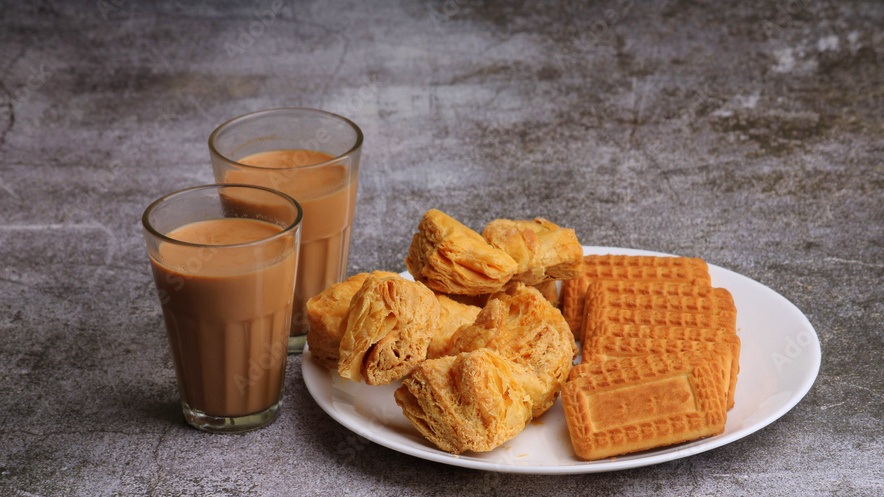
- Description: Masala Tea, also known as Chai, is a spiced tea beverage made by brewing black tea with a mixture of aromatic spices and herbs. In Nepal, it’s typically prepared with a blend of spices like cardamom, cinnamon, ginger, cloves, and black pepper. This flavorful tea is usually served with milk and sweetened with sugar. It is often accompanied by biscuits—simple, crisp cookies that are perfect for dipping into the hot tea.
- Ingredients: The key ingredients for Masala Tea include black tea leaves, a variety of spices (cardamom, cinnamon, cloves, ginger, and black pepper), milk, and sugar to taste. Biscuits are generally made from flour, sugar, butter, and sometimes include additional flavorings like vanilla or nuts.
- Preparation: Masala Tea is prepared by boiling water with the spices and tea leaves, allowing the flavors to infuse. Milk and sugar are then added and the mixture is brought to a boil again. Finally, it’s strained into cups. Biscuits are baked until they are golden and crisp, making them sturdy enough to hold up to dipping.
- Texture and Taste: The tea is rich and creamy with a bold, spicy flavor that warms the palate. The sweetness level can be adjusted according to personal preference. Biscuits have a firm, crunchy texture that softens slightly when dipped into the tea, absorbing the flavors and creating a pleasing contrast.
- Serving: Masala Tea with Biscuits is typically served hot. The biscuits are either served on the side for dipping or as a snack to accompany the tea. This pairing is popular for breakfast or during tea time in the afternoon, offering a moment of relaxation and enjoyment.
- Cultural Significance: Tea time is an essential part of daily life in many Nepali homes, reflecting a broader South Asian tradition of taking breaks to enjoy tea with family and friends. The spices used in Masala Tea are also considered beneficial for health, particularly for digestion and warming the body.
- Popularity: The comfort of sipping spiced tea with biscuits transcends all social and economic boundaries in Nepal, making it a universally cherished practice.
Masala Tea with Biscuits is more than just a beverage and a snack—it's a comforting ritual that brings people together, offering warmth and a shared experience that is deeply embedded in Nepali culture. Whether starting the day or pausing for a midday break, this pairing is a cherished part of Nepali hospitality.
Makai
Makai is a simple yet popular Nepali dish that features corn as its main ingredient. This humble grain is celebrated in various forms across Nepal, providing both nutrition and flavor. Here’s a closer look at Makai and its significance in Nepali cuisine:
.jpg)
Description: Makai generally refers to dishes made with corn in Nepal. It can be served boiled, grilled, or ground into flour and used in various recipes. The most common preparations are Makai Ko Roti (cornbread) and boiled or roasted corn on the cob.
Ingredients: The primary ingredient is fresh corn. Depending on the preparation, it might be accompanied by simple seasonings such as salt, lime, and chili powder to enhance the natural sweetness of the corn.
Preparation:
- Boiled Makai: Fresh corn cobs are shucked and boiled in salted water until tender. They are then often seasoned with lime and chili powder.
- Roasted Makai: Corn cobs are roasted over an open flame or charred in a pan, giving them a smoky flavor. Once cooked, they are typically rubbed with a mixture of salt, chili powder, and lime.
- Makai Ko Roti: Cornmeal is mixed with water and a pinch of salt to form a dough, which is then patted into flat rounds and cooked on a hot griddle until golden and cooked through.
Texture and Taste: Boiled and Roasted Makai have a juicy, sweet taste with a hint of smokiness if roasted. The kernels are tender yet retain a satisfying bite. Makai Ko Roti is dense with a grainy texture, offering a rustic, earthy flavor that pairs well with savory side dishes.
Serving: Makai in its whole form (boiled or roasted) is often eaten as a snack or a side dish. Makai Ko Roti is typically served with curries or pickles and is a staple during meals in corn-growing regions. Corn dishes are particularly popular during the monsoon and winter seasons when fresh corn is abundantly available.
Health Benefits: Corn is a good source of fiber, vitamins, and minerals, particularly vitamin B6, niacin, and potassium. It’s also naturally gluten-free, making it a great grain choice for those avoiding gluten.
Cultural Significance: Corn is an important crop in many hilly and rural areas of Nepal, where it is easier to cultivate than rice. Makai dishes are a staple in these regions and are often associated with rural life and traditional farming practices.
Popularity: Due to its simplicity, affordability, and accessibility, Makai is enjoyed across Nepal, from rural villages to urban centers. It's a versatile ingredient that forms an essential part of the local diet.
Makai showcases the simplicity and nutritional aspects of Nepali cuisine, offering a variety of ways to enjoy this staple grain. Whether savored as a hearty bread or a flavorful snack, Makai remains a cherished food item in the daily lives of the Nepali people.
Aloo Paratha
Aloo Paratha is a beloved breakfast and comfort food in Nepal, as well as in neighboring India and Pakistan. This stuffed bread is both filling and flavorful, making it a popular choice not only for breakfast but also for a satisfying meal at any time of the day. Here's a detailed look at Aloo Paratha:
- Description: Aloo Paratha is a type of flatbread that is stuffed with a spiced mixture of mashed potatoes. It is then rolled out and cooked on a hot griddle with butter or ghee until golden brown on both sides.
- Ingredients: The primary ingredients include wheat flour for the dough and potatoes for the filling. The potato filling is typically seasoned with spices such as cumin, coriander, red chili powder, garam masala, and sometimes chopped onions, cilantro, and green chilies for added flavor.
- Preparation: The dough is made from wheat flour, water, a little oil, and salt, kneaded until smooth. Separately, boiled potatoes are mashed and mixed with the spices and other ingredients to make the filling. Small portions of the dough are rolled into balls, flattened, and filled with the potato mixture. These balls are then carefully rolled out to ensure the filling stays enclosed within the dough. The stuffed dough is cooked on a preheated griddle, typically brushed with ghee or butter, flipped occasionally until both sides are golden brown and crispy.
- Texture and Taste: Aloo Paratha is known for its crispy exterior and soft, flavorful interior. The spices in the filling make it aromatic and savory, providing a delightful contrast to the plain bread.
- Serving: It is commonly served hot and often accompanied by sides such as yogurt, butter, pickle, or chutney. These accompaniments help balance the richness of the paratha and add a layer of flavor.
- Health Benefits: Potatoes are a good source of vitamins C and B6, potassium, and carbohydrates, providing energy. When combined with whole wheat flour, Aloo Paratha offers a meal rich in fiber.
- Cultural Significance: Although not originally from Nepal, Aloo Paratha has been wholeheartedly adopted into Nepali cuisine, especially in urban areas and regions close to India. It reflects the culinary cross-pollination between the neighboring countries.
- Popularity: This dish is popular for its convenience as a portable meal and its ability to be pre-made and reheated. It's a common choice not only for everyday meals but also for outdoor activities like picnics and travel.
Aloo Paratha embodies the hearty, comforting aspects of South Asian cuisine, making it a favorite choice for anyone seeking a filling and tasty meal. Its universal appeal lies in its simplicity and the comforting taste of spiced potatoes wrapped in warm bread.
Jeri (Jalebi)
Jeri (also known as Jalebi in other parts of South Asia) is a popular sweet treat in Nepal, especially enjoyed during festivals, celebrations, and as a delightful breakfast or snack. Here's an in-depth look at Jeri:
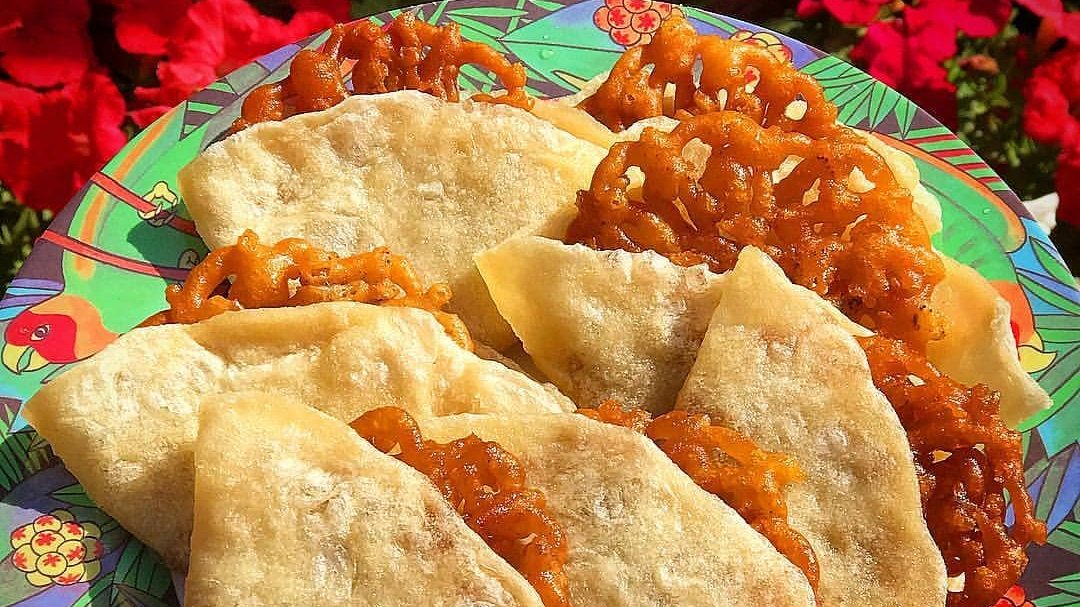
- Description: Jeri is a sweet, crispy pastry made from a batter of wheat flour that is fermented slightly before being deep-fried in a coil or circular shapes. After frying, these crisp coils are immediately soaked in a saffron-infused sugar syrup, which imparts a bright orange or yellow color and adds a shiny glaze.
- Ingredients: The basic ingredients for Jeri include wheat flour, yogurt (used as a fermenting agent), and sometimes a bit of cornstarch or rice flour for extra crispiness. The sugar syrup is typically flavored with saffron, cardamom, and sometimes rose water.
- Preparation: The batter is prepared by mixing wheat flour, yogurt, and water to create a thick, smooth consistency. This mixture is allowed to ferment for a few hours to develop a slight tang. For frying, the batter is poured through a small container with a hole at the bottom or a cloth with a hole (similar to a piping bag) directly into hot oil, forming spirals or circular shapes. Once they are golden and crispy, the fried coils are immediately soaked in hot sugar syrup for a few minutes, allowing them to absorb the sweetness while retaining a crunchy texture.
- Texture and Taste: Jeri is celebrated for its unique texture, which is crispy on the outside with a slightly chewy interior. The sweetness of the syrup and the slight tang from fermentation give Jeri a distinctive and appealing flavor.
- Serving: Typically served warm or at room temperature, Jeri is often enjoyed as a standalone sweet or paired with savory items like curd or sprouted beans to balance its sweetness. It is a common sight in sweet shops, especially during morning hours as a popular breakfast treat.
- Health Benefits: While Jeri is high in sugar, making it more of an occasional indulgence, the fermentation of the batter does add beneficial bacteria that can aid in digestion.
- Cultural Significance: In Nepal, Jeri is a festive food, commonly prepared during major Hindu festivals such as Dashain and Tihar. It's also a popular offering in temples and during special occasions.
- Popularity: Due to its delightful taste and festive association, Jeri holds a beloved place in Nepali cuisine and is widely recognized across the country.
Jeri offers a deliciously sweet and crispy experience, representing the joyous aspects of Nepali celebrations and gatherings. Its bright appearance and irresistible taste make it a favorite among both locals and visitors alike.
Bhakka
Bhakka is a traditional steamed rice cake that is popular in the eastern parts of Nepal, particularly in the Terai region. It is known for its soft, spongy texture and mild flavor, making it a favored choice for breakfast or a light snack. Here's an in-depth look at Bhakka:
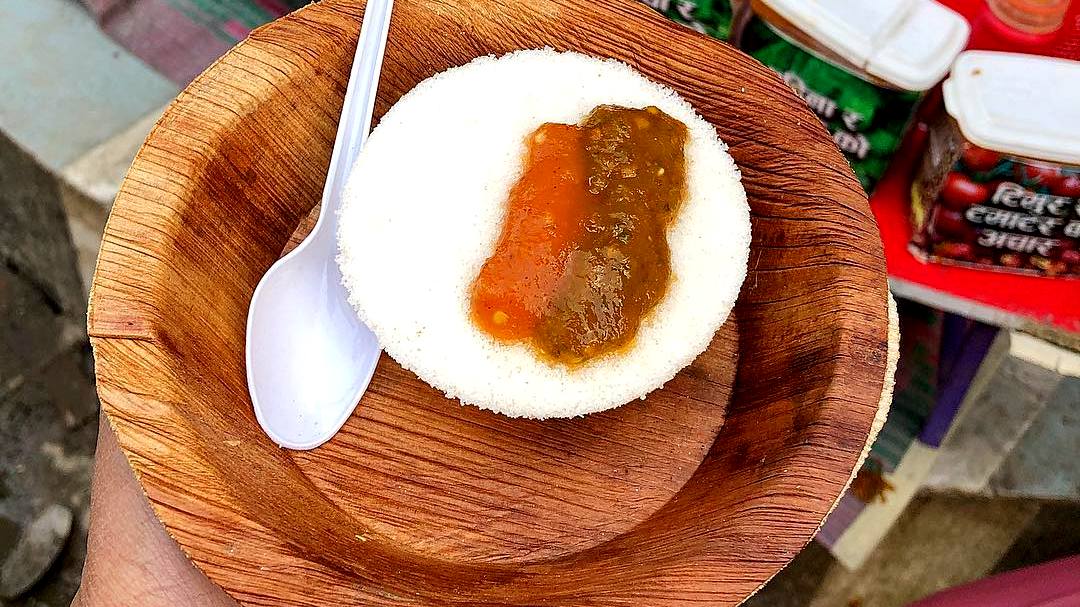
- Description: Bhakka is a soft, white, steamed cake made primarily from rice flour. It is often compared to idli, a similar steamed cake found in South Indian cuisine, but Bhakka has a distinctive texture and taste that is unique to the Nepali culinary tradition.
- Ingredients: The main ingredient in Bhakka is rice flour. Sometimes, a little yeast or baking soda is added to the batter to help it rise and achieve its characteristic spongy texture.
- Preparation: To prepare Bhakka, rice flour is mixed with water to form a smooth batter. The batter is then allowed to ferment for a few hours to develop its flavor and texture. Once fermented, the batter is poured into molds or small cups and steamed until the cakes rise and become fluffy. Bhakka is typically cooked in a traditional steamer or a modern steamer used for making momos or other steamed dishes.
- Texture and Taste: Bhakka is known for its light, airy, and spongy texture. It has a very mild flavor, making it versatile enough to be paired with both sweet and savory accompaniments. It is commonly served warm, often with sides such as spicy pickles, yogurt, or a variety of chutneys.
- Serving: In Nepal, Bhakka is typically enjoyed as a breakfast item or as a light snack during the day. It is considered a healthy, digestible food option, suitable for all ages.
- Health Benefits: Being steamed and made from rice, Bhakka is low in fat and easy on the stomach. It is gluten-free, making it an excellent choice for those with gluten sensitivities.
- Cultural Significance: Bhakka holds a special place in the cuisine of the Madhesi and Tharu communities in Nepal. It is often prepared during local festivals and special occasions, signifying its importance in communal and family gatherings.
- Popularity: While Bhakka is particularly popular in the Terai regions of Nepal, its appeal has spread to other parts of the country as well. Its ease of preparation and versatility have made it a beloved dish among diverse Nepali communities.
Bhakka is a testament to the simplicity and richness of Nepali cuisine, offering a delicious and nutritious option that highlights the traditional cooking methods and ingredients of Nepal. Its gentle flavor and comforting texture make it a cherished dish, enjoyed by many.
Exploring the delightful array of Nepali breakfast options offers a delicious gateway into the country's rich culinary heritage. From the crispy sweetness of Sel Roti to the savory comfort of Aloo Paratha, and the unique texture of Bhakka, each dish provides a taste of Nepal's diverse flavors and cooking traditions. Whether you're a local or a traveler, starting your day with these traditional breakfasts ensures not just a nourishing meal but also a deeper connection to the vibrant culture of Nepal. Enjoy these morning delights for a truly authentic Nepali experience.

